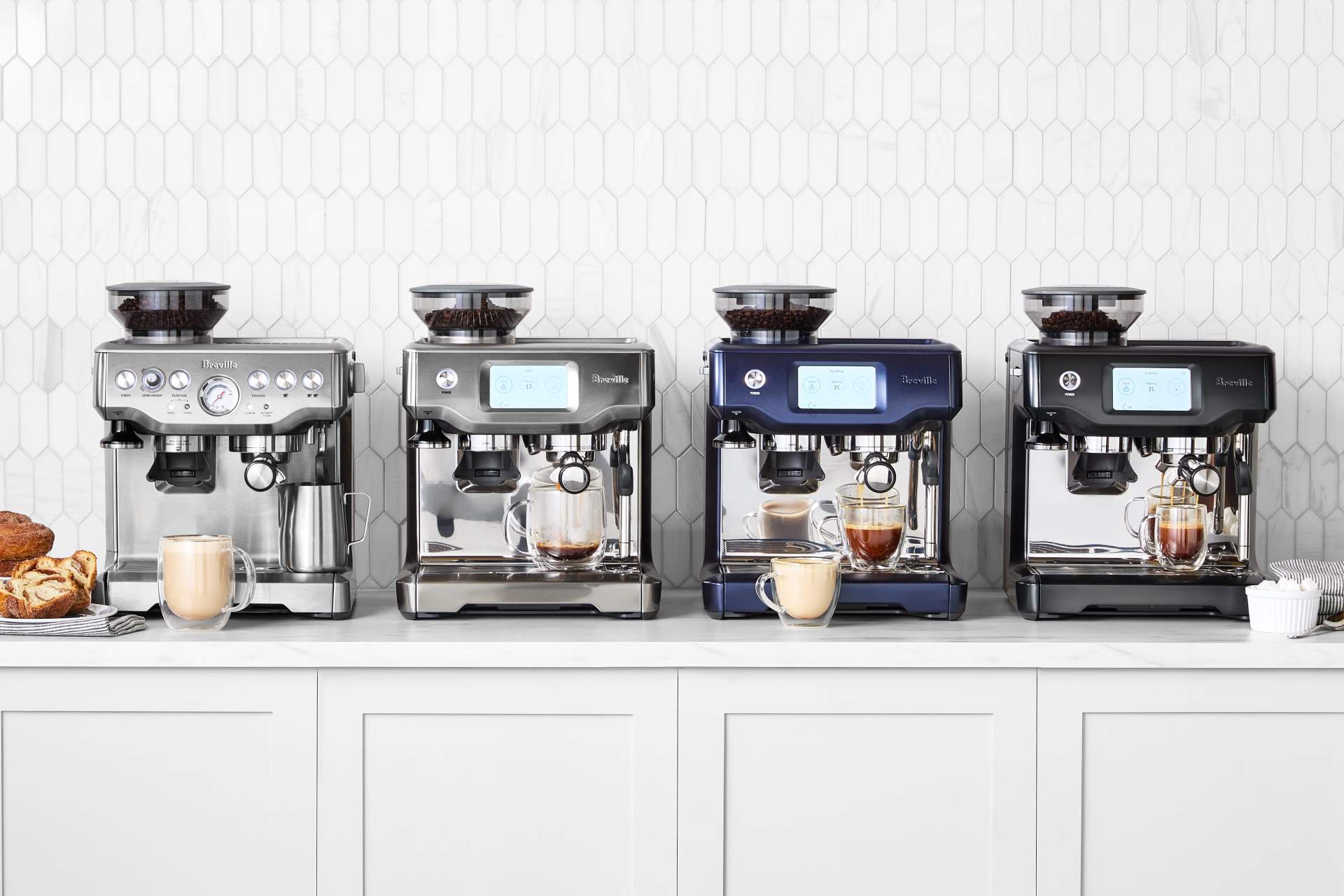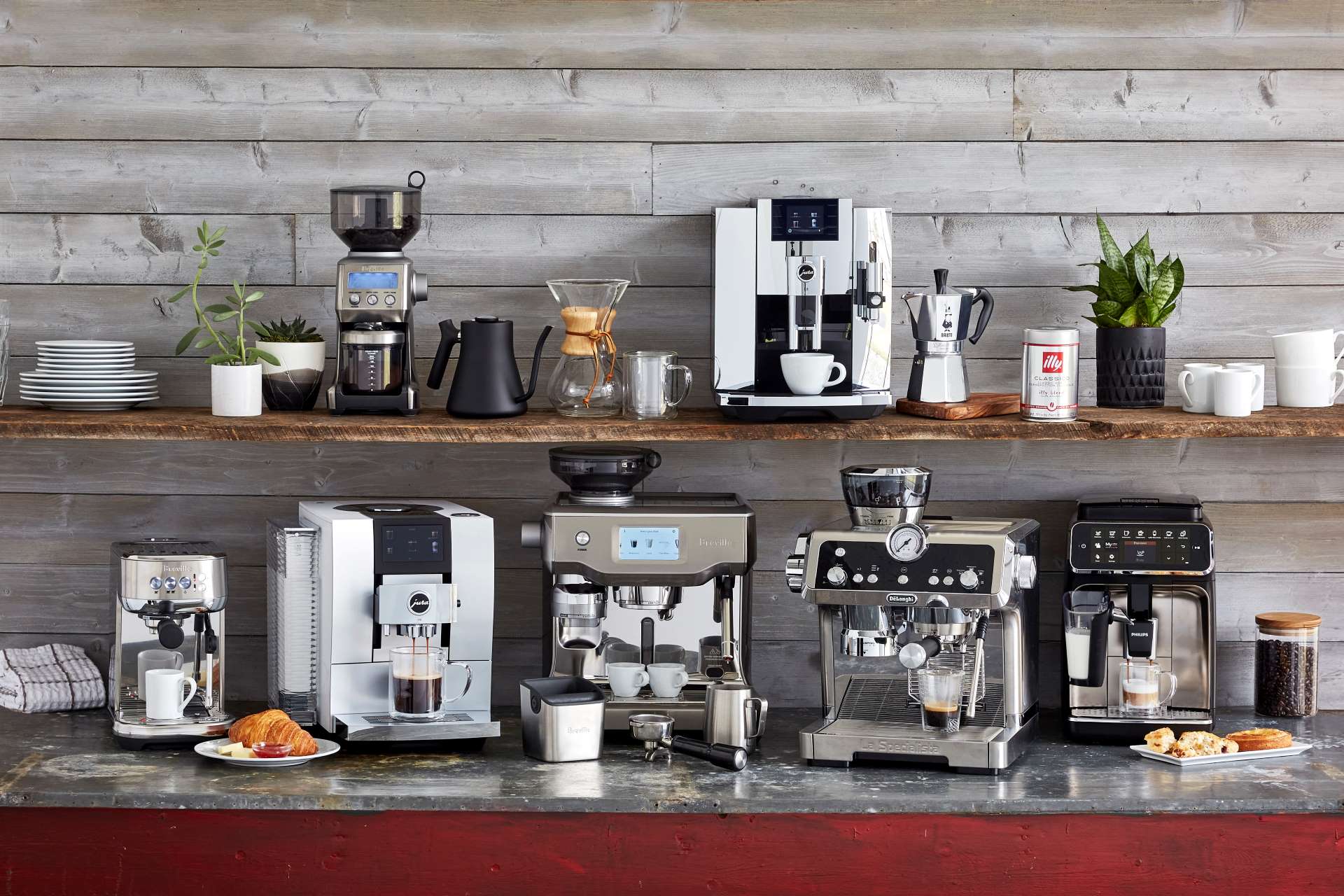Your morning brew, made by you, perfected by Breville.


Whether you’re team French press or a pour-over connoisseur, the best cup of coffee is simply one that you enjoy sipping on—and, if you’re making it at home, one that you enjoy preparing!
Some people find the ritual of preparing coffee a fun process, while others prefer a simpler approach and just want a reliable drip coffee maker to help start their mornings off right.
If you’re looking to elevate your homemade coffee to one that rivals that of your favorite coffee spot, there are a few essential tools to have in your kitchen. With the right coffee gear, you can whip up your own homemade pumpkin spice latte or even perfect the delicate art of the cappuccino!
Check out our recommendations for making the best barista-worthy coffee at home.
Some argue that a good coffee grinder is the most essential piece of coffee equipment you can have in your kitchen—and that it makes a bigger difference in the quality of your cup of joe than the coffee-making tool itself.
Using a quality coffee grinder ensures a consistent grind to your coffee beans, which is important to the coffee extraction process (when hot water is poured over ground coffee to bring out the coffee flavor). A lower quality coffee grinder may result in an uneven grind and can cause either over-extracted or under-extracted coffee—which can lead to coffee that is too sour, too acidic, or lacks sweetness and a smooth finish.
Different types of coffee brewing processes require different coarseness in the grind.
Most pre-ground coffee is pretty fine, which works for a standard coffee maker and filter, but isn’t the best for every coffee-making device. Pour-over coffee, for example, usually requires a medium grind. French presses, on the other hand, need a coarser texture so that the grounds don’t go through the mesh as you push the filter down.
Pro Tip: Different types of coffee beans require a different coarseness in the grind, too. Light roasts, for example, need a finer grind for the best extraction results, while dark roast coffees usually need a slightly coarser grind.
To brew better coffee at home, it’s important to have the right measuring equipment for your coffee beans.
A kitchen scale is the best way to go since it’s much more accurate and precise than your typical coffee spoon or measuring cup. Plus, part of perfecting your home coffee experience is finding the exact quantity of coffee beans you prefer in your coffee—and being able to have the same consistent cup every time you brew it. Having a measuring scale lets you weigh ingredients down to the gram.
Pro Tip: The water-to-coffee ratio varies based on the coffee bean and brewing method, but most of it is up to preference in taste. Regular coffee will have a ratio of 1 part coffee to 18 parts water (1:18), and stronger coffee will have a ratio of 1 part coffee to 15 parts water (1:15). Cold brew is typically 1 to 8, since it leaves you with a concentrated formula you add water to as you drink it.
If you love cappuccinos or lattes, a milk frother is a must-have kitchen tool. A milk frother provides a canvas for coffee art, creating a base for coffee designs in all your favorite milk-based coffee drinks.
A milk frother is great for cold brews and even tea lattes, giving your drink an upgrade with a barista-like touch of smooth foam or silky microfoam. Adding a layer of milk froth elevates the texture of your drink and provides an extra richness that mirrors the taste and look of something you’d find at your favorite café.
Milk frothers typically come in two different types: countertop and handheld.
There are also frothers attached to espresso machines. Some milk frothers, typically the countertop frothers, can also steam milk or heat the milk as it froths. If you like warm froth in your coffee drinks, be sure to check to see what the heating capabilities are as you’re shopping for your milk frother—otherwise, you may need to warm the milk before using your tool.
Pro Tip: Whole milk (or dairy milk with some percent of fat in it) typically froths better than non-dairy milks, like oat or almond milk, which can be too watery to create a real foam.
If you love pour-over coffee, investing in a good gooseneck kettle is a game-changer. A gooseneck kettle, which has a very thin spout in comparison to a normal teakettle, gives you much better control over how much water you pour in as well as where you pour, so you can get an even extraction across all the grounds.
Many kettles offer ultra-precise temperature control, too. This is important if you’re focused on finding the best temperature of water for a certain type of roast or coffee bean.
Pro Tip: Light to medium roasts, for example, need very hot water—typically around 200°F. Darker roasts are better with slightly cooler water temperatures between 185°F and 190°F. The cooler temps avoid over-extraction and lessen the chance of having some residual bitterness. If you use your kettle to heat water for a French press, it’s also better to have lower water temperatures, as the longer brewing time helps with the extraction of the coffee flavor.
If you’re really looking to take your coffee up a notch, you might consider investing in your own espresso machine. Espresso machines open up a whole new world of barista-quality coffee at home, as a great shot of espresso is the foundation for many café drinks, from macchiatos to Americanos.
There are four main types of espresso machines—manual, semi-automatic, fully automatic and capsule—which have varying levels of “extras,” mechanisms and hands-on involvement. All give the right amount of pressure for ideal flavor extraction of your espresso—which is richer and bolder than regular coffee.
Manual espresso machines are typically the most involved and make a big statement on your countertop. They let you refine the extraction process, but they’re also the most difficult to master. Semi-automatic and automatic espresso machines make homemade espresso a bit easier, with the only main difference between the two being that automatic machines have a preset timer for pulling espresso. This means that from start to finish, the process is relatively hands off.
A capsule machine, on the other hand, is great for ease of use and speed—you simply pop in a capsule or pod into the machine, and it creates a consistent, crema-topped espresso shot in seconds.
Some espresso machines come with their own frothers, which is a nice addition if you love milk-based coffee drinks. Others include built-in grinders, so you always have the freshest espresso shot. What espresso machine works best for you depends on how often you plan on using it, how much you plan on spending and how involved you want to be in the espresso-making process.
Pro Tip: If you’re wondering how to make iced coffee at home with espresso, try making coffee ice cubes! Use leftover coffee or brew a fresh batch, then carefully pour your coffee into an ice cube tray and place it into the freezer. This way, you can get the perfectly smooth cup of iced coffee you crave, and you don’t have to worry about it watering down as the ice melts.
Thirsty for more freshly brewed inspiration? Check out our library of recipes to discover your new favorite coffee drink
Join The Conversation